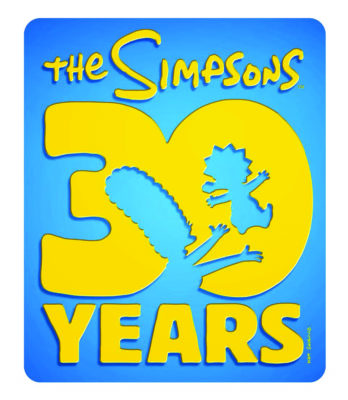
The end of the 1980s gave us the start of a new American family on the Fox network. The dad was a drunk, the son was a hellraiser and for some reason everybody was yellow, but when “Simpsons Roasting on an Open Fire” appeared on TV screens throughout the country on Dec. 17, 1989, it signaled the start of a television show that revolutionized the conventions of the medium.
The Simpsons, the brain child of cartoonist Matt Groening, may seem tame by modern standards, but for about a decade those animated maniacs were at the forefront of American counterculture. Sitcoms on the small screen at the time were wholesome, borderline hokey affairs like Full House and The Cosby Show, which featured upper-class families of telegenic adults and children whose problems were almost always small enough to be solved in the course of a single half-hour episode.
Groening, ever the contrarian from the earliest days of his comic strip Life In Hell, despised the phony aesthetic those shows peddled, referring to the decoupling of any sort of human flaws or dysfunctionality from the family unit as “zombification.” He fired his first salvo at the conventions of the genre when the Simpsons first started appearing as shorts on The Tracey Ullman Show in 1987, but the characters wouldn’t assume their final forms until two years later.
America at the end of the ’80s was in a transitional phase. Once the Berlin Wall fell, and the Soviet Union soon thereafter, the loss of the red menace that defined the West left a chasm in the country’s mindset.
It was the perfect time to start knocking down hallowed beliefs and institutions. It was the perfect time for The Simpsons.
The show’s titular unit struggled from episode one. Financially, the family was one mistake away from not being able to afford Christmas presents. In stark contrast to their TV contemporaries, the Simpsons’ fortunes rose and fell alongside the typical American family. Morally their prospects weren’t always much better. Homer, ever the family man and kind-hearted father, was also an alcoholic prone to bouts of violent rage, usually against his son Bart. Bart himself was a hyperactive menace, causing mischief wherever he went. Even Marge and Lisa weren’t without their flaws, and while everybody in the family was a genuinely good person when push came to shove, the issues they had were the kind that any group of people is bound to exhibit from time to time.
Against all odds, what sounded like a recipe for disaster on paper turned out laughs week after week, and before long The Simpsons became a global phenomenon. Led by an all-star cast of writers that included Greg Daniels, Al Jean and a young Conan O’Brien at one point or another, the show’s humorous takes on life and culture made it must-see TV throughout the ’90s. Over 30 seasons, a movie and nearly 700 episodes later, The Simpsons is still going strong.
But over the last few years, The Simpsons has managed to acquire an entirely different reputation from the contrarian streak it started out with. Oddly enough, the show seems to have managed to predict the future on a few dozen occasions.
Any show that goes on as long as The Simpsons is bound to produce some prescient moments, but the sheer frequency with which the show’s plot points seems to find themselves playing out in our world is uncanny. Perhaps most famously, the season 11 episode “Bart to the Future,” set 30 years ahead of the episode’s 2000 release date, jokingly mentioned that Donald Trump had completed a stint in the White House before Lisa Simpson assumed the role of the country’s executive. True to the show’s satirical nature, the writers have always tried to exaggerate the world we live in just enough for the effects to become comedic. Groening himself said he was surprised that the throwaway joke, made in the middle of Trump’s failed third-party campaign, came to pass.
 Outside the world of politics, The Simpsons predictive streak has hit upon a number of sporting events as well. The show has correctly predicted the outcomes of three Super Bowls (XXVI, XXVII and XXIX), the 2014 FIFA World Cup, a U.S. Olympic Gold Medal in curling and Lady Gaga’s Superbowl Halftime Show performance.
Outside the world of politics, The Simpsons predictive streak has hit upon a number of sporting events as well. The show has correctly predicted the outcomes of three Super Bowls (XXVI, XXVII and XXIX), the 2014 FIFA World Cup, a U.S. Olympic Gold Medal in curling and Lady Gaga’s Superbowl Halftime Show performance.
A 30-year-running show is bound to make some calls about how technology will develop as well, and the sixth season episode “Lisa’s Wedding” managed to make multiple accurate predictions. The characters keep up with each other through video chat about a decade before Skype and two decades before FaceTime. Lisa’s would-be fiancé Hugh is even seen talking to his watch at one point, even though Siri wouldn’t make its Apple Watch debut until 2015. The show’s London even features a building eerily similar in design and location to The Shard, a skyscraper that wouldn’t be built until 2012.
Call them weird, call them omniscient, but one way or another, The Simpsons has managed to nail a number of guesses about what our world would look like. Perhaps the real takeaway here is that those accurate predictions are just a matter of the show having stuck around for three decades. Any piece of culture as large and influential as The Simpsons has become is bound to have that sort of ripple effect, and more than anything it serves as just another reason why we should appreciate that living legend of animation that spawned so many imitators before it’s gone.


















